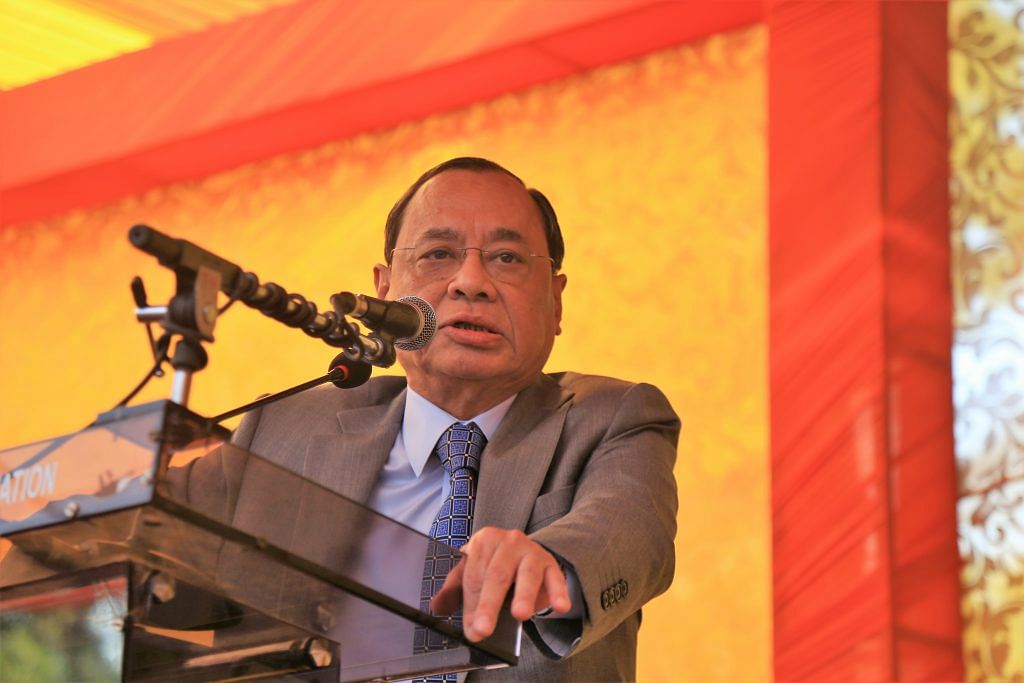The key issues to watch out for are how Ranjan Gogoi handles the Supreme Court roster, judicial appointments and pendency of cases.
New Delhi: Justice Ranjan Gogoi is set to take oath as the 46th Chief Justice of India Wednesday amid great expectations that he will usher in internal reforms in the Supreme Court.
After publicly criticising his predecessor Dipak Misra’s exercise of powers as CJI, Justice Gogoi has set himself an uphill task. ThePrint looks at some of the key issues that will be closely watched in his tenure.
Also read: CJI Dipak Misra recommends Ranjan Gogoi as his successor in the Supreme Court
Master of roster
In a historic press conference on 12 January held by four senior judges of the Supreme Court, including Justice Gogoi, the key issue raised was that CJI Misra was “selectively allocating sensitive cases” to a particular bench.
To counter the criticism, Misra later devised a roster which defined what kind of cases would be heard by each bench and put it in the public domain to ensure transparency. However, Misra ensured all important cases remain in his court.
Gogoi has not yet signalled any revamp of the process but it is to be seen how he handles his administrative powers as the ‘master of roster’.
Judicial appointments
Judicial appointments, the issue on which the outgoing CJI was heavily criticised, will be a major challenge for Justice Gogoi. The day he takes oath as CJI, the court will have seven vacancies and two more judges will retire by the end of 2018.
Apart from sending recommendations to the government, it will have to be seen if Justice Gogoi will stand up to the Modi government on the issue of judicial appointments. The collegium headed by CJI Misra was criticised for meekly surrendering to the government.
Since the SC struck down the National Judicial Appointments Commission Act in 2015, the government and the judiciary are yet to form consensus on the procedure for appointing judges. The memorandum of procedure (MoP) is yet to be finalised although the government claims that the judiciary has ceded ground and has agreed to its demand.
Collegiality among judges
Relations between judges of the SC had soured during CJI Misra’s tenure. As one of his critics, Justice Gogoi faces an uphill task in bringing back collegiality among judges.
Justice Gogoi and three other senior judges had written to CJI Misra asking him to call a full-court meeting to discuss the future of the Supreme Court. That meeting never happened. It is to be seen if Justice Gogoi will make amends now by calling a full-court meeting of all judges.
The public confidence in the judiciary dipped following the impeachment motion against CJI Misra. Although he diluted criticism against him by delivering many landmark verdicts, it will be for Justice Gogoi to restore the judiciary’s public image.
Pendency of cases
Every CJI puts the problem of pendency of cases on top of his agenda. However, Justice Gogoi has said “he has a plan” even before he has taken oath as CJI.
Also read: From St. Stephen’s to Supreme Court, India’s next CJI has never minced his words
“Pendency has the potential of making the system irrelevant,” Gogoi said at a public event on 30 September. His predecessor, Misra had an impact in a substantial way since many constitution bench cases that required larger benches were set up in his tenure.
Gogoi’s plan, when it unfolds, will show whether it is the same plan every CJI has or if it will have any real impact.
